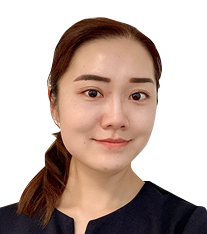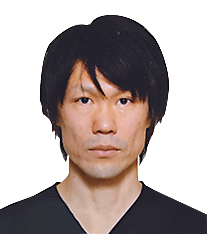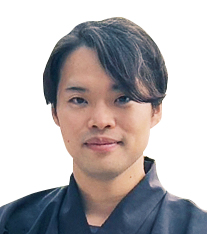- JST Home
- /
- Strategic Basic Research Programs
- /
 PRESTO
PRESTO- /
- project/
- Fundamental Understanding of Age-Related Organismal Transformations/
- [Aging] Year Started : 2024
[Aging] Year Started : 2024
Kei Igarashi
Age-induced impairment of entorhinal cortex-projecting dopamine neurons
Grant No.:JPMJPR2481
Researcher
Kei Igarashi

Chancellor’s Fellow Associate Professor
School of Medicine
University of California, Irvine
Outline
This study aims at elucidating the anatomical, physiological, and molecular mechanisms of age-related dysfunction in entorhinal cortex-projecting dopamine neurons, critical for memory encoding. As the entorhinal cortex is the brain region exhibiting the earliest pathophysiological alterations in Alzheimer’s disease, this study is expected to lay a foundation in understanding Alzheimer’s disease pathophysiology.
Sayaka Inoue
Neuroendocrinological understanding of behavioral changes during menopause
Grant No.:JPMJPR2482
Researcher
Sayaka Inoue

Assistant Professor
Department of Psychiatry
Washington University in St. Louis
Outline
Menopause is an age-related transformation that occurs in women in their 40-50s. Along with reproductive aging, ovarian sex hormone levels gradually decrease and this can alter the central nervous system functions. This study aims to identify the mechanistic basis underlying behavioral changes during reproductive aging. Using the neural circuits that control social behavior as a model system, we address the neuroendocrinological mechanisms that link reproductive aging and behavioral changes by use of molecular, anatomical, physiological, and behavioral analyses.
Hiroyuki Uechi
Exploring metabolites regulating intracellular protein thermodynamics
Grant No.:JPMJPR2483
Researcher
Hiroyuki Uechi

Associate professor
Graduate school of pharmaceutical sciences
Kyoto University
Outline
Deteriorating intracellular protein dynamics is a hallmark of ageing and the associating diseases, such as protein aggreation and mislocalization. Little is known about how cells generate intracellular environments which give proteins physiological dynamics. Recent emerging insights suggest that intracellular dynamics of biomolecules emerge based on their thermodynamics, such as phase separation, which can be modulated by small molecules. This study aims to unveil a cellular mechanism by which living systems tune protein dynamics using endogenous small molecules, that is, intracellular metabolites, which may underlie physiological protein dynamics and its disfucntion in ageing.
Manami Oya
Mechanism of interaction between age-dependent alternation of primary cilia and aging
Grant No.:JPMJPR2484
Researcher
Manami Oya

Assistant Professor
Graduate School of Medicine
Nagoya University
Outline
Melanocortin type 4 receptor (MC4R), which increases energy expenditure in response to satiety signals, localizes in primary cilia of hypothalamic neurons. Primary cilia are fibrous structures that protrude from a cell body and act as antennae by bearing receptors. MC4R-bearing primary cilia shorten with age, leading to an age-dependent reduction in metabolism. In this project, I aim to elucidate the mechanism of age-dependent shortening of MC4R-bearing primary cilia. First, I will search for factors involved in the age-dependent shortening by using scRNA-seq and validate them in cultured cells and animals. I believe that the knowledge gained from this project will provide clues to elucidate the mechanism of age-related decline in various physiological functions from the perspective of primary cilia.
Akifumi Shiomi
Understanding of age-related organismal transformations through cell mechanics
Grant No.:JPMJPR2485
Researcher
Akifumi Shiomi

Program-Specific Associate Professor
The Hakubi Center for Advanced Research
Kyoto University
Outline
Cell surface mechanics plays a pivotal role in numerous biological contexts including aging. However, the transcriptional regulation underlying the change in the cell surface mechanics and its causal relationships largely remain to be uncovered because of the limited tools to interrogate the link between the mechanical properties and the molecular regulation. This project aims to elucidate the complex relationship between cellular mechanics and gene regulation in aging by applying ELASTomics (electroporation-based lipid-bilayer assay for cell surface tension and transcriptomics), the analytical method that enables comprehensive measurement of gene expression and cell surface tension at the single-cell resolution.
Mio Nakanishi
Understanding of Aging Through Alterations in Hematopoietic Cell Spatial Organization Dynamics
Grant No.:JPMJPR2486
Researcher
Mio Nakanishi

Lecturer
Graduate School of Medicine
Chiba University
Outline
In this project, we aim to establish a framework for understanding and suppressing the progression of hematopoietic aging phenomena, based on our discovery of a novel regulatory mechanism involving the spatial organization of hematopoietic stem and progenitor cells. Additionally, we seek to unravel the underlying mechanisms of aging that lead to deterioration across various tissues, such as disruptions in quiescence and skewed differentiation.
Takashi Namba
Understanding the cause of neurodegeneration from human evolution
Grant No.:JPMJPR2487
Researcher
Takashi Namba

Group Leader
HiLIFE
University of Helsinki
Outline
During the evolution, human has acquired brain with significantly improved cognitive functions. It has been shown that human brain evolution is driven by mechanisms characteristic to human. This project will investigate a potential involvement of such mechanisms by utilizing patient-derived iPS cells and multi-omics to understand the novel etiology of neurodegenerative diseases.
Yoshitaka Matsuo
The connection between age-dependent alteration of translational dynamics and the hallmarks of aging.
Grant No.:JPMJPR2488
Researcher
Yoshitaka Matsuo

Associate Professor
Institute of Medical Science
The University of Tokyo
Outline
It has been reported in recent years that the frequency of translation stalling increases with aging, leading to the worsening of proteostasis disruption. This project focuses on age-dependent translational stalling, aiming to elucidate the molecular mechanisms behind the increased translation stalling caused by aging and the accumulation of its products. Additionally, by investigating the possibility that translation stalling associated with aging stimulates the various types of hallmarks of aging, we aim to contribute to a fundamental understanding of the biological changes that occur with aging.
Akihiro Matsumoto
Understanding of the neural basis for aging of the retinal computation
Grant No.:JPMJPR2489
Researcher
Akihiro Matsumoto

Assistant Professor
National Institute of Genetics
Research Organization of Information and Systems
Outline
This project aims to understand the neural basis for functional alteration of the retinal computation by aging. We will reveal the impact of deteriorated retinal inputs on the central nervous system, such as vision, sleeping, and cognition, by using physiology, imaging, genetics, behavioral analysis, and mathematical modeling. Based on the findings of this project, we will aim to establish a novel therapeutic strategy for restoring the dysfunction in the central nervous system by interventional manipulation of retinal function.
Yuka Mitsuhashi(Koike)
Deciphering Neurodegeneration via DNA Damage by Age-Dependent Demethylation
Grant No.:JPMJPR248A
Researcher
Yuka Mitsuhashi(Koike)

Associate Professor
Brain Research Institute
Niigata University
Outline
One of the significant risk factors for sporadic neurodegenerative diseases is aging. In this study, I focused on DNA demethylation and DNA damage as inducers of neurodegeneration, which are age-dependent molecular mechanisms. I aim to decipher the molecular mechanisms of age-related neurodegeneration by combining the state-of-the-art technologies of single nuclear epi-transcriptome and DNA damage site analyses in human brains with neurodegenerative diseases.













